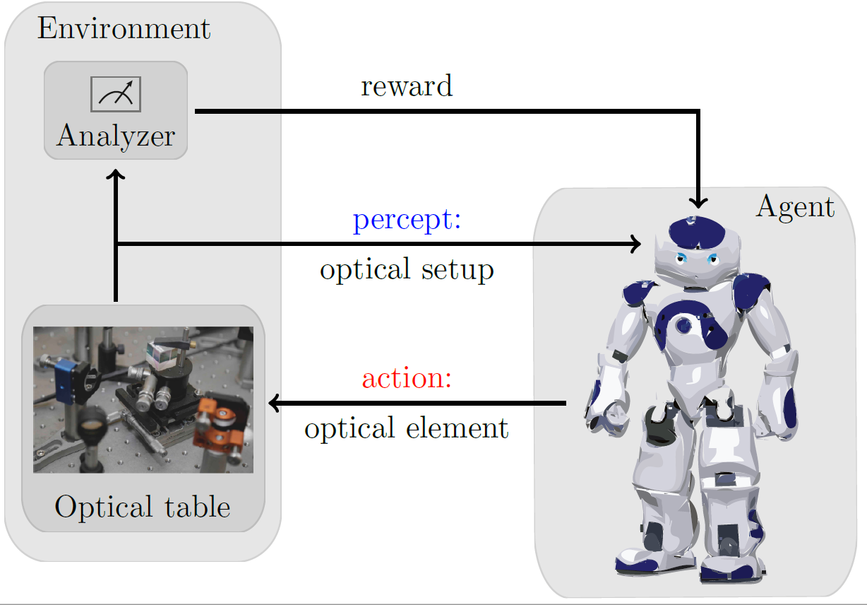Some months ago, Mario Krenn, Anton Zeilinger and colleagues at the IQOQI and at the University of Vienna developed the algorithm Melvin, which can automatically design new quantum experiments for which the human scientists had no answer until then [1]. Several of these experiments have been successfully implemented in the laboratories of Zeilinger group [2-4]. Also, the unintuitive solutions of the algorithm have led to new ideas and connections in quantum physics [5,6].
Now the Viennese physicists have joined forces with the group of Hans Briegel from the University of Innsbruck, who are engaged in research at the boundary between quantum physics and artificial intelligence. Together, they have now expanded Melvin's ability with Artificial Intelligence. This was achieved with the insight that the search for experiments can actually be seen as navigating a labyrinth - a prominent problem in artificial intelligence research. With this insight, one can now apply the knowledge from the field of artificial intelligence directly to questions in quantum experiments.
That's exactly what the Austrian collaboration has done. With the help of a Reinforcement Learning Algorithm (Projective Simulation) developed in Innsbruck, it was not only possible to find quantum experiments for specific questions, but to optimize them autonomously (without human predefined rules). Moreover, the new algorithm - after training - finds more different solutions than the original program, because the labyrinth of optical elements is searched more efficiently.
After training, memory of the RL algorithm was analyzed. There, indeed, some optical configurations have been discovered that human researchers have long used and considered essential. The idea now is to make similar advances by applying it to other less well-researched problems, and to gain new physical insights by analyzing the memory of the artificial agent.
The research has been published in Proceedings of the National Academy of Sciences (PNAS) [7].
[1] M. Krenn, M. Malik, R. Fickler, R. Lapkiewicz and A. Zeilinger, Automated search for new quantum experiments. Physical Review Letters116, 090405 (2016).
[2] M. Malik, M. Erhard, M. Huber, M. Krenn, R. Fickler, A. Zeilinger, Multi-photon entanglement in high dimensions. Nature Photonics10 (4), 248 (2016).
[3] A. Babazadeh, M. Erhard, F. Wang, M. Malik, R. Nouroozi, M. Krenn, A. Zeilinger, High-Dimensional Single-Photon Quantum Gates: Concepts and Experiments. Physical Review Letters119 (18), 180510 (2017).
[4] M. Erhard, M. Malik, M. Krenn, A. Zeilinger, Experimental GHZ entanglement beyond qubits, arXiv:1708.03881 (2017).
[5] M. Krenn, A. Hochrainer, M. Lahiri, A. Zeilinger, Entanglement by Path Identity, Physical Review Letters118 (8), 080401 (2017).
[6] M. Krenn, X. Gu, A. Zeilinger, Quantum Experiments and Graphs: Multiparty States as coherent superpositions of Perfect Matchings, Physical Review Letters119 (24), 240403 (2017).
[7] A.A. Melnikov, H.P. Nautrup, M. Krenn, V. Dunjko, M. Tiersch, A. Zeilinger, H.J. Briegel, Active learning machine learns to create new quantum experiments, Proceedings of the National Academy of Sciences115 (6), 1221-1226 (2018).


